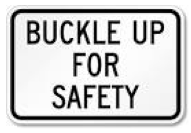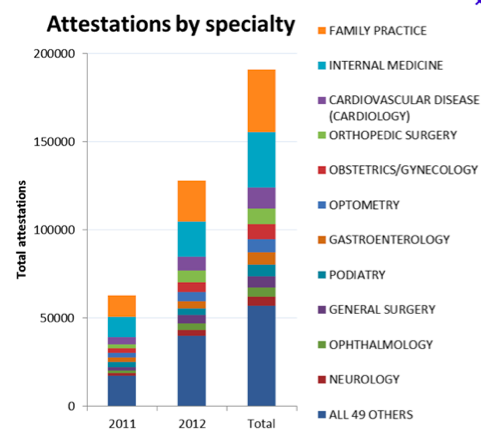 I’m traveling for work today and as I pulled my rental car out of the Avis lot the seatbelt reminder began to chime. “Buckle up, it’s the law” immediately popped into my head, a testament to effective advertising. If you are, like me, over the age of 50, then you may recall the catchy seatbelt jingle from the 1960s, “Buckle up for safety, buckle up!” From the 1960s to 1984 when New York passed the first state seatbelt law, buckling up was optional and seatbelt campaigns were designed to appeal to our better judgment.
I’m traveling for work today and as I pulled my rental car out of the Avis lot the seatbelt reminder began to chime. “Buckle up, it’s the law” immediately popped into my head, a testament to effective advertising. If you are, like me, over the age of 50, then you may recall the catchy seatbelt jingle from the 1960s, “Buckle up for safety, buckle up!” From the 1960s to 1984 when New York passed the first state seatbelt law, buckling up was optional and seatbelt campaigns were designed to appeal to our better judgment.
Today, while Federal law only requires vehicles to have seat belts available, 49 states have laws that require vehicle occupants to wear seat belts to save lives. (New Hampshire is the lone hold-out with no seatbelt law.) In these states, wearing a seatbelt is no longer a suggestion; if you don’t comply with the seatbelt law, you will face a penalty.
 The transition from “Buckle up for safety” to “Buckle up, it’s the law” has similarities to the current situation with Meaningful Use (MU). In the past few years, the government has supported the opportunity for physicians to adopt EHRs and to use specific EHR features as part of MU. The time for encouragement and recommendation will soon be in the rearview mirror as failure to participate in MU results in a penalty. If you did not attest to MU in 2013 and you don’t qualify for a hardship exception, you will face a 1% penalty in 2015.
The transition from “Buckle up for safety” to “Buckle up, it’s the law” has similarities to the current situation with Meaningful Use (MU). In the past few years, the government has supported the opportunity for physicians to adopt EHRs and to use specific EHR features as part of MU. The time for encouragement and recommendation will soon be in the rearview mirror as failure to participate in MU results in a penalty. If you did not attest to MU in 2013 and you don’t qualify for a hardship exception, you will face a 1% penalty in 2015.
The good news is that there has been a lot of EHR adoption by physicians in the last decade. In January 2014 the CDC published data on the characteristics of EHR use among physician practices. This CDC graph shows the significant increase in EHR use from 18% in 2001 to 78% in 2013:
Along with rising EHR adoption in recent years there has been increased participation in MU. In 2012 there were twice as many first-time MU EHR attestations than in 2011. Dr. Robert Rowley used data.gov information to generate this graph of MU attestations by physician specialties:
So, will EHR adoption and Meaningful Use attestation help physicians save lives? Several of the 17 MU stage 2 core objectives may lead the way to improved patient-physician relationships and improved patient outcomes. EHRs with 2014 Meaningful Use certification must provide a way for patients to view online, download, or transmit their own patient-record information and, in addition, EHRs must provide secure electronic messaging between providers and patients. These actions are part of the patient electronic-access MU objective that may be achieved with use of a patient portal.
Despite the patient electronic-access opportunity created by MU, many physicians still seem reluctant to fully use it. A recent Accenture survey showed that 79% of physicians are happy to give patients access to update demographic data and 67% support patient access to update the medical history, but only 50% of physicians feel patients should have access to their own lab data directly and only 45% support patient input of home data such as blood pressures and glucose results.
The Robert Wood Johnson Foundation OpenNotes project may change physician buy-in for shared EHR access with patients. Since 2010 this project has allowed 20,000 patients cared for by 100 primary care physicians to view all provider notes through a patient portal. Patients report feeling more in control of their health, being more likely to comply with medications, and having an improved understanding of health issues because of access to records in the patient portal. After 1 year of the project, 99% of patients who used the patient portal to view notes were happy with this access and 85% said that their choice of provider in the future would be influenced by the opportunity to have access to medical records. All of the physicians participating in the shared OpenNotes wanted to continue.
The road from requiring EHRs to have the technology for a patient portal through MU certification to encouraging physicians to incorporate patient electronic access into patient care may be long. Although patient enthusiasm for access to records may make it a requirement and we’ll all hop aboard with “Portal Up for Patients, Portal Up!”
How do you feel about patients having access to input data for their medical record, to see lab and radiology results, or to view your provider notes? Post a comment and let us know.




Leave a Reply